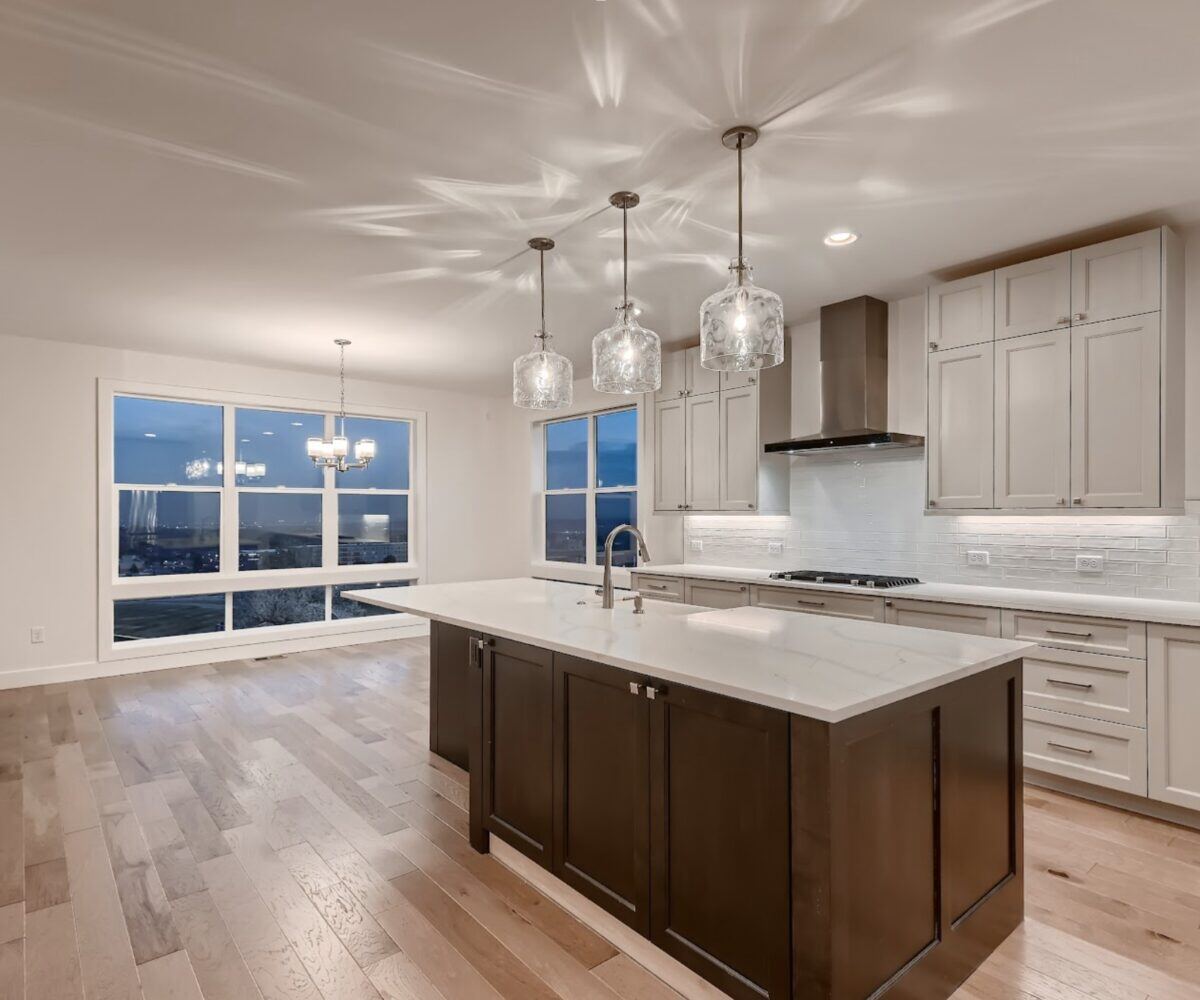5 Tips for Hardwood Floor Care

Nothing beats the warmth and beauty of wood flooring. Whether solid, engineered or reclaimed, wood floors require regular attention and care to keep looking their best. It’s not rocket science, though; follow the guidelines listed below as recommended by the National Wood Flooring Association (NWFA) to keep your wood floors in top shape.
1. Sweep, Dust, Vacuum, and Mop Regularly
Keeping debris picked up is essential with hardwood floors, as many things can scratch or stain the floor’s surface. Even something as seemingly inconsequential as pet hair can potentially damage wood floors.
- Sweep and dust-mop daily—if not the whole floor, then at least higher-traffic areas.
- Vacuum the floor weekly, after ensuring the “hard floor” setting has been enabled on the vacuum. Using a regular carpet setting can scuff and scratch the floor’s surface.
- Wet-mop the floors monthly. Use a microfiber mop instead of a cotton one. According to Bona, an industry leader in hardwood floor care, microfiber mops use 20 times less liquid than cotton mops but clean just as effectively. Using as little liquid as possible will greatly lessen the risk of your floor soaking up excess liquid and swelling, which can eventually cause warping. For the same reason, avoid using steam or steam mops. While they do provide a deep clean, the vapor can damage wood floors.
2. Choose Cleaning Products Carefully
Different floor finishes require distinct treatments, so be sure to check the specific product recommendations of your flooring manufacturer.
- Use a gentle commercial floor cleaner or make your own. The expert ladies at Bleach Pray Love recommend using one teaspoon of powdered Tide detergent to one gallon of hot water with a spin-dry mop (to reduce the amount of water on the floor).
- Never use a strong cleaning chemical on a hardwood floor. These can cause a cloudy effect on the finish, which worsens with build-up over time.
- Don’t use polishes or products that promise to “rejuvenate” or “revitalize” wood floors. These contain chemicals that make the floor look better in the short run but don’t wear well over time.
- Never use Murphy’s Oil Soap on wood flooring, as the oil in the cleaner prevents the floors from properly absorbing stain at a future time when you will want to sand and refinish them.
3. Keep an Eye Out for Temperature and Humidity
Hardwood floors can be strongly affected by the environment in which they exist. Temperature and humidity both affect the looks and durability of wood floors.
- Keep the room temperature between 60-80 degrees Fahrenheit.
- If you notice cupping on the floor’s surface, that means there is too much moisture around, on, or below the wood. Remove any standing water immediately and use a dehumidifier as appropriate.
- Gapping, splitting, or cracking, on the other hand, are all signs of too little moisture. Wet-mop the floor regularly with a microfiber mop and consider installing a humidifier.
4. Recoat Every 3-5 Years
Apply a fresh coat of finish periodically to return life and luster to the appearance of your hardwood floor. The frequency of application depends upon factors such as floor traffic and climate, but every 3-5 years is commonly recommended.
Check with your finish or flooring manufacturer to find out which type of finish to use.
5. Refinish Every 7-10 years
If the surface looks worn. becomes uneven, or woodgrain starts fading, it’s time to sand and refinish. Refinishing a hardwood floor is a major undertaking and you may want to hire a hardwood floor care professional.
Although the frequency of refinishing will vary based on the type of wood, how well it’s been cared for, the amount of traffic, and other factors, most floors need to be refinished every 7-10 years. The average hardwood floor can be sanded and refinished 4-6 times before it needs to be replaced.
Count on Our Experience
Having served customers in the Denver metro area and northern Colorado for more than 40 years, Sheffield has the knowledge, expertise, and trade relationships to help you realize the home of your dreams. Contact us today and let’s get started.
/Sheffield_Logo_Horizontal_Reversed.png)


